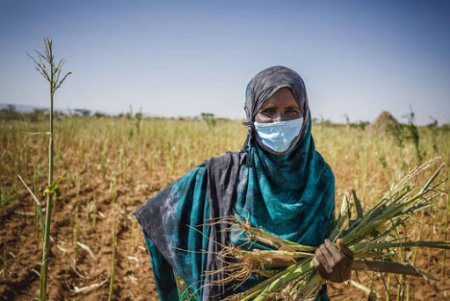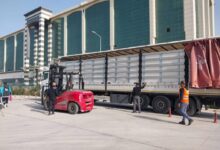
The Director-General of the Food and Agriculture Organization of the United Nations (FAO), QU Dongyu, warned that severe underfunding of the agri-food sector was preventing Africa from reaching its potential. He spoke at the launch of FAO’s latest report, Public Expenditure on Food and Agriculture in sub-Saharan Africa, which reveals the gap between long-standing political commitments and financial reality in 13 sub-Saharan African countries. He noted that the report was based on “rigorous analysis over the last 15 years, made possible thanks to strong collaboration with our Members in the region.”
Meeting in Maputo in 2003 (and again in Malabo in 2014), African Union member states pledged to devote 10 percent of their national budgets to food and agriculture, in an effort to fuel social and economic growth. Yet nearly two decades on, this pledge remains unfulfilled.
“Let’s unblock the bottlenecks that are holding back potential by increasing coordination and upskilling human capacity in African nations,” the FAO Director-General urged. “And let’s unlock funds and streamline public financial systems, so that the scarce resources we have do not go unspent.”
Of the countries surveyed by the Monitoring and Analysing Food and Agricultural Policies (MAFAP) programme – an FAO initiative that also tracks public expenditure in Africa – only one, Malawi, has consistently met the 10 percent target; one other, Mali, has met it in some years; the remaining 11 (Benin, Burkina Faso, Burundi, Ethiopia, Ghana, Kenya, Mozambique, Rwanda, Senegal, Tanzania and Uganda) have not succeeded in doing so. In some cases, food and agriculture receive only three percent, or just over, of the national budget. Moreover, the report found that on average, of the little money made available for food and agricultural development, over a fifth remains undisbursed due to insufficient implementing capacity. Agriculture, the report suggests, is being implicitly penalized.
Presenting the report’s findings, Marco V. Sánchez, Deputy Director of FAO’s Agri-food Economics Division, outlined research showing that technical efficiency in agriculture increases dramatically as spending nears US$ 80 per capita, after which it begins to taper off: but most African countries are nowhere close to that amount. Sánchez acknowledged there was “narrow fiscal space” to expand public investment in Africa, all the more so in the context of the COVID-19 pandemic – but argued that even where it was impossible to spend more money, it remained possible to spend it better and generate efficiency gains.
The report found that the lion’s share of national expenditure on food and agriculture in Africa goes to subsidizing inputs (fertilizer, tools and suchlike), which Sánchez said tend to exhibit diminishing returns over time; while research and development (R while Shenggen Fan of the China Agriculture University warned against invoking inefficiency in African agri-food systems as a barrier to investment by external partners. “Efficiency improvement needs capacity, and capacity needs investment.”
Leonard Mizzi of the European Commission, insisted on inter-ministerial dialogue: “Food and agriculture are not just a matter for agriculture ministries,” he said, in a context of competition for resources exacerbated by the COVIDF-19 pandemic. “Business as usual will send us hurtling into a wall,” he added, echoing the general call for transformative approaches to food security in Africa.
It was left to the Chief Economist of FAO, Máximo Torero, to wrap up the event by stressing the imperative of generating quality data to guide agricultural investment decisions – with today’s report a significant step along that path. Public investment should be monitored by results, he concluded, and in turn act as a catalyst for private investment.
Source: FAO







